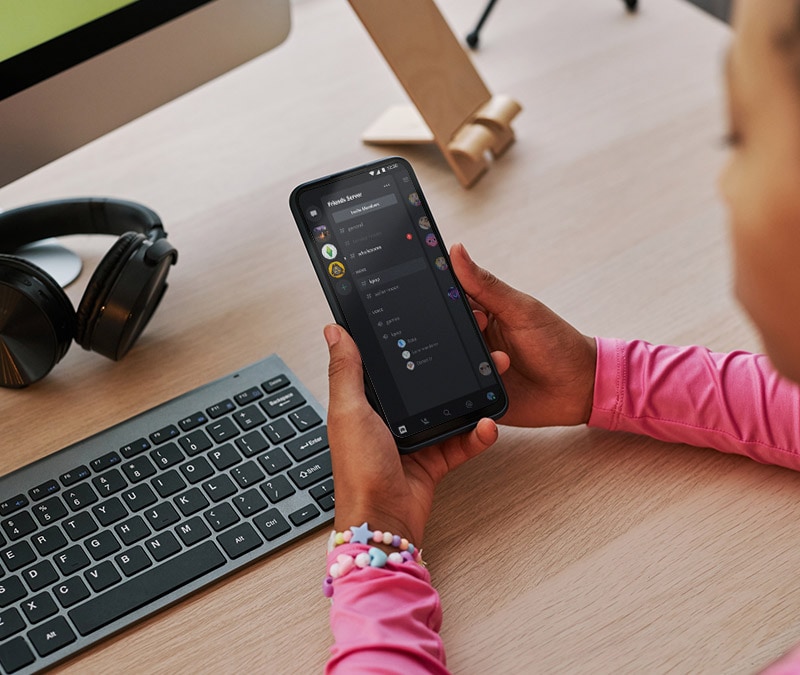Connected toys and what you need to know about them
Learn about connected toys and tablet devices and how to help keep young children safe.

The Internet of Things (IoT) isn’t some lofty concept about future integration of technology into the home. IoT — or the concept in which our everyday physical objects connect to the internet and share information with each other — is already a reality. In fact, experts predict the number of connected devices will reach 38.5 billion in 2020. You may already own one of these smart gadgets. They range from cars to coffee makers, home security devices, washing machines and even children's toys.
For children today, IoT isn’t a brave new world. It’s the reality they have come to know. A University of Iowa study found that 90 percent of kids under age 2 had a moderate ability to use a tablet. But things like tablets and smartphones aren't the only cause for concern. Parents should be cautious with any toy that contains cameras or microphones, has GPS or internet connectivity, or requests and stores data. In short, double-check any toy that has the potential to expose your kids or their information to the outside world.
IoT Toys and devices: The benefits
These digital toys and devices come with a lot of benefits for youngsters. Baby monitors with built-in cameras allow you to keep an eye on your child from anywhere, and GPS trackers help you find lost tots. Teddy the Guardian is an interactive toy with a vital signs sensor that enables you to check your kid’s temperature within seconds.
Parents who want to channel a child’s attraction to devices into a learning opportunity might turn to toys that promote STEM — science, technology, engineering and math. Toy robots like Dash and Dot allow kids to program how the robot moves, and Nancy Drew: Codes & Clues, and Harry Potter Kano Coding Kit teach the basics of coding, a skill sometimes cited as important for high-paying jobs in tech.
IoT devices can possibly help kids stay healthy, with fitness trackers like Garmin's Vivofit Jr 2, the Fitbit Ace, and LeapFrog LeapBand. There are even smart toothbrushes, like Grush, that gamify a seemingly mundane task.
IoT toys and devices: The downside
Although IoT devices can help your kids learn and stay healthy, there are important considerations to make as more and more connected devices become available for kids.
Negative effects on children’s development
Reaching for a tablet before reaching for a book could hinder a child’s development. Doctors advise that kids under the age of 2 should not be allowed to look at screens for too long because it might harm their memory, language development, and reading ability. At this age, your kids’ screen time should be very limited, such as video chatting with family along with parents. The American Academy of Pediatrics recommends limiting screen use to 1 hour per day of high-quality programs for children age 2 to 5 years old.
It’s a good idea to talk to kids about the media they’re using so they can connect it to their real lives. As they get older, make a family plan that distinguishes different types of media use and includes limits on screen time that you and your kids can track.
Heightened risks with constant connectivity
Retain <p>: Though a more connected world has benefits, there are also heightened risk factors regarding your child’s privacy. With toys being connected to the internet, online hackers and other cybercriminals could access a clear pathway to their personal information.
How to help protect your children from IoT risks
Here are five ways you can help.
- One of the most important things you can do to help protect your kids’ privacy is have a conversation with them about potential risks on the internet. Talk to your child about never giving out personal information to people online or posting sensitive data on social media.
- Keep a close eye on kids’ online activity. Ensure you have access to all of their social networking sites, emails, and browser histories.
- Make sure all passwords on every connected toy and device are complicated and tough to crack. A good way to do this is to include upper and lowercase letters, numbers, and symbols in the password and change it every three months.
- Keep your Wi-Fi connection password protected and download the latest firmware software. Never let your child access the web from an unsecure Bluetooth or Wi-Fi connection.
- Several Federal Trade Commission-approved groups verify children's privacy, so you can check one of these before buying an internet-connected toy. Go a step further and check online reviews to see if there have been negative reports on the toy.
As a parent, it’s is your job to protect your kids, both online and off. While IoT toys come with many advantages and fun web-connected features, they can also come with security risks that can pose a threat to personal information and data. With the right amount of knowledge and care, parents can mitigate these threats. Be aware, be educated, and be involved.

Cyber threats have evolved, and so have we.
Norton 360™ with LifeLock™, all-in-one, comprehensive protection against viruses, malware, identity theft, online tracking and much, much more.
Try Norton 360 with Lifelock.
Editorial note: Our articles provide educational information for you. Our offerings may not cover or protect against every type of crime, fraud, or threat we write about. Our goal is to increase awareness about Cyber Safety. Please review complete Terms during enrollment or setup. Remember that no one can prevent all identity theft or cybercrime, and that LifeLock does not monitor all transactions at all businesses. The Norton and LifeLock brands are part of Gen Digital Inc.





Want more?
Follow us for all the latest news, tips, and updates.